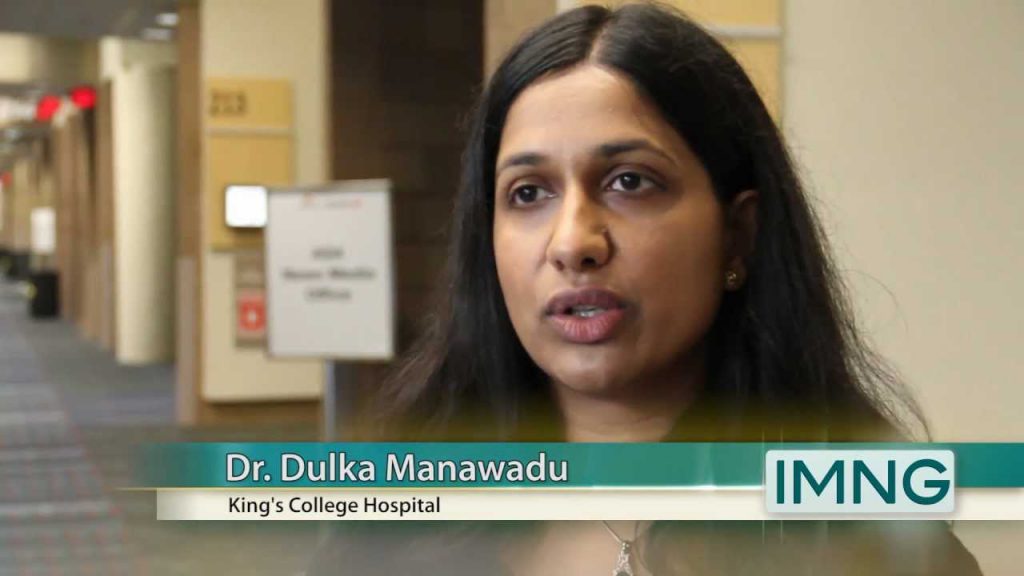A review of a stroke registry shows that it may be safe to give clot-busting therapy to “wake-up” stroke patients who have the same clinical and imaging features as those of patients who are traditionally considered eligible for the therapies.
Clinicians have traditionally shied away from giving clot-busters to patients who have stroke symptoms upon awakening because the time of onset is generally unknown. But many of these patients likely have experienced the stroke within a few hours of arriving for treatment and could benefit from a clot-busting intervention, Dr. Dulka Manawadu said during a press briefing at the International Stroke Conference.
Determining how to identify which wake-up patients could benefit “is an area of growing importance because it may allow us to extend the indication for this effective treatment,” said Dr. Manawadu, a stroke and general medicine consultant at King’s College Hospital in London.
Dr. Manawadu and her colleagues at King’s College analyzed patients in the hospital’s stroke registry who received alteplase (Activase) between January 2009 and December 2010. The study analyzed data for 326 unselected and consecutive patients with a stroke onset of 0 to 4.5 hours with a National Institute of Health Stroke Scale (NIHSS) score of 5 or greater, and 68 unselected, consecutive patients who awoke with symptoms, had an NIHSS of 5 or greater, and had an unknown time of onset.
At King’s College Hospital, clinicians can give thrombolysis to wake-up patients on a compassionate basis. Decisions are made on a case-by-case basis, and treatment is given with consent, said Dr. Manawadu. The patient’s history, clinical signs of stroke, and scan findings are all taken into consideration. Outside of the time constraint, wake-up patients have to meet all other eligibility criteria for clot-busting treatment. A nonenhanced CT scan must show an Alberta Stroke Program Early CT Score (ASPECTS) of 7 or greater. CT Perfusion (CTP) mismatch was also used to assess eligibility in some wake-up patients, but was not mandatory.
The mean age was 73 years for both arms. There was no significant difference between the groups in most baseline characteristics. However, there was significantly greater use of CTP in the wake-up group: 44 patients, or 65%, compared with 84 patients, or 26% of the comparator group. The wake-up patients also had a higher incidence of large-vessel stroke.
The outcomes were statistically similar for both groups, except for mean NIHSS scores at 24 hours. The mean score was significantly lower for the wake-up group than for the reference group (7.2 vs. 11.5). The rates were similar between the groups for having any intracranial hemorrhage ([ICH], 22% vs. 20%, respectively) or symptomatic ICH (2.9% vs. 3.4%). At 3 months after stroke, wake-up patients had a lower death rate (15% vs. 25%).
When the data for wake-up stroke patients were stratified by age, patients older than 80 years fared significantly worse than did those under 80.
The study was limited in that it was retrospective, but it did include all comers, Dr. Manawadu said. Despite the findings from the registry analysis, there have been no changes in protocol at King’s College; wake-up patients are still given thrombolysis on a case-by-case basis, she said.
Dr. Lee H. Schwamm, director of the telestroke and acute stroke services at Massachusetts General Hospital, Boston, said that parts of the study are reassuring and consistent with what would be expected. A surprising finding was that “the use of CT scanning alone was able to identify this cohort safely, and they could be treated with similar outcomes.”
Dr. Lee H. Schwamm
It is surprising in part because CT generally is not very sensitive in detecting ischemic stroke. If the findings hold up, it would be important because CT is more widely available than is MRI, Dr. Schwamm said in an interview.
Currently, few American clinicians are using clot-busting therapy for wake-up patients, and it would be premature to use the King’s College study as a basis for thrombolysis in those patients, Dr. Schwamm said.
The conference was sponsored by the American Heart Association. The study was funded by the Institutional Research and Development Board at King’s College Hospital, London. Dr. Manawadu and her colleagues reported having no relevant disclosures.
